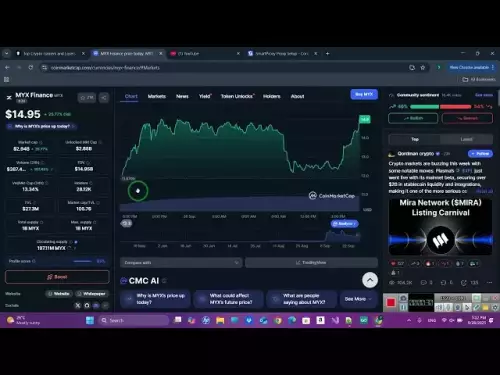-
 bitcoin
bitcoin $109547.008142 USD
0.04% -
 ethereum
ethereum $4011.838726 USD
-0.05% -
 tether
tether $1.000402 USD
-0.01% -
 xrp
xrp $2.798606 USD
0.88% -
 bnb
bnb $970.877944 USD
1.39% -
 solana
solana $202.237275 USD
-0.95% -
 usd-coin
usd-coin $0.999673 USD
0.00% -
 dogecoin
dogecoin $0.229294 USD
-1.15% -
 tron
tron $0.336370 USD
-0.45% -
 cardano
cardano $0.777260 USD
-1.66% -
 hyperliquid
hyperliquid $45.503019 USD
1.73% -
 ethena-usde
ethena-usde $1.000362 USD
0.01% -
 chainlink
chainlink $20.785303 USD
-1.10% -
 avalanche
avalanche $28.755822 USD
-0.11% -
 stellar
stellar $0.358303 USD
-0.48%
What are the risks of using high leverage in Bitcoin contract trading?
High leverage magnifies both profits and losses in Bitcoin contract trading, increasing risks of margin calls, liquidations, and poor decision-making.
Nov 13, 2024 at 08:08 pm

- Definition of Leverage: Leverage is a financial tool that allows traders to amplify their profits and losses by borrowing funds from a broker. In Bitcoin contract trading, leverage enables traders to control a larger position size than their account balance.
- Advantages of Leverage: Leverage can provide several benefits, including increased profit potential, efficient use of capital, and the ability to express a strong directional view on the Bitcoin market.
- Risks of Leverage: While leverage has advantages, it also carries significant risks. High leverage can magnify both profits and losses, leading to substantial financial setbacks.
- Margin Calls: When using leverage, traders must maintain a minimum margin balance to cover potential losses. If the market moves against their position and the account balance falls below the required margin level, the broker may issue a margin call. Failure to meet the margin call can result in the liquidation of open positions.
- Liquidations: Liquidations occur when the value of a leveraged position falls below a certain level and the broker automatically closes the position to minimize losses. High leverage increases the risk of liquidations, as even small market fluctuations can trigger this process.
- Emotional Trading: Leverage can lead to emotional trading decisions, as traders may feel pressure to recover losses or chase profits. This can result in poor risk management and further increase the likelihood of substantial losses.
- Maximum Leverage: Different exchanges and brokers offer varying levels of leverage. It's crucial to choose a level that aligns with your risk tolerance and trading strategy. Excessive leverage increases the probability of liquidations and margin calls.
- Position Sizing: The position size should be adjusted based on the leverage used. Higher leverage requires smaller position sizes to maintain the same risk exposure. Oversizing positions can amplify potential losses.
- Risk-Reward Ratio: The risk-reward ratio is a measure of the potential profit versus the potential loss for a given trade. Leverage can alter the risk-reward ratio, making it more challenging to manage risk effectively.
- Start Small: Begin using leverage gradually and gradually increase the leverage ratio as you gain experience and develop a sound risk management strategy.
- Set Stop Loss Orders: Stop loss orders are essential for managing risk. They automatically close positions when the price reaches a preset level, limiting potential losses.
- Monitor Positions Regularly: High leverage positions require constant monitoring. Traders should track market movements closely and adjust positions or margins as needed to mitigate risks.
- Adequate Capital: Maintain sufficient capital in your trading account to cover potential losses. Insufficient capital can exacerbate the risks of using high leverage.
- Understand Margin Requirements: Familiarize yourself with the margin requirements of your broker. Different instruments have varying margin requirements, which can impact the level of risk exposure.
High leverage in Bitcoin contract trading can amplify profits and losses. While leverage offers potential benefits, it also carries significant risks, including margin calls, liquidations, and emotional trading. Traders should carefully consider their risk tolerance, position sizing, and risk management strategies when using high leverage. By managing risks effectively, traders can harness the power of leverage while mitigating potential setbacks.
Disclaimer:info@kdj.com
The information provided is not trading advice. kdj.com does not assume any responsibility for any investments made based on the information provided in this article. Cryptocurrencies are highly volatile and it is highly recommended that you invest with caution after thorough research!
If you believe that the content used on this website infringes your copyright, please contact us immediately (info@kdj.com) and we will delete it promptly.
- Ethereum's Price Dance: Will Crypto Rallies Keep the Music Playing?
- 2025-09-29 08:25:12
- Crypto Staking Spotlight: BlockDAG's Referral Revolution Outshines Avalanche & Meme Coin Hype
- 2025-09-29 08:45:16
- BlockDAG, SUI, Chainlink: Navigating the Crypto Landscape in 2025
- 2025-09-29 08:25:12
- XRP Price Gears Up: Breakout Signals and What to Watch
- 2025-09-29 08:30:01
- Bitcoin, Gold, and Digital Assets: Navigating the New Financial Frontier
- 2025-09-29 08:45:16
- UN Embraces Blockchain: A Pension Fund Success Story and a Glimpse into the Future
- 2025-09-29 08:50:01
Related knowledge

How do I use the scheduled order feature in Cardano (ADA) contracts?
Sep 28,2025 at 10:18pm
Understanding Scheduled Orders in Cardano Smart ContractsCardano operates on a proof-of-stakes consensus mechanism and uses the Plutus scripting langu...

How do I enable the "scalping-only" mode for Cardano (ADA) contracts?
Sep 24,2025 at 03:19am
Understanding Scalping Strategies in Crypto Derivatives1. Scalping in cryptocurrency trading refers to executing multiple short-term trades within min...

What is the settlement time for Cardano (ADA) contracts?
Sep 28,2025 at 04:18am
Understanding Cardano's Contract Settlement Mechanism1. Cardano operates on a proof-of-stake consensus model known as Ouroboros, which fundamentally i...

How do I add margin to Cardano (ADA) contracts?
Sep 27,2025 at 07:54pm
Understanding Margin in Cardano (ADA) Smart ContractsCardano operates on a proof-of-stake blockchain that supports smart contracts through its Plutus ...

What is the maximum position limit for Cardano (ADA) contracts?
Sep 23,2025 at 11:00pm
Understanding ADA Futures and Derivatives Market Structure1. Cardano (ADA) futures contracts are offered by several major cryptocurrency derivatives e...

What is the maker fee for Cardano (ADA) contracts?
Sep 26,2025 at 09:01am
Understanding Maker Fees in Cardano (ADA) Contracts1. The concept of maker fees applies broadly across decentralized exchanges and smart contract plat...

How do I use the scheduled order feature in Cardano (ADA) contracts?
Sep 28,2025 at 10:18pm
Understanding Scheduled Orders in Cardano Smart ContractsCardano operates on a proof-of-stakes consensus mechanism and uses the Plutus scripting langu...

How do I enable the "scalping-only" mode for Cardano (ADA) contracts?
Sep 24,2025 at 03:19am
Understanding Scalping Strategies in Crypto Derivatives1. Scalping in cryptocurrency trading refers to executing multiple short-term trades within min...

What is the settlement time for Cardano (ADA) contracts?
Sep 28,2025 at 04:18am
Understanding Cardano's Contract Settlement Mechanism1. Cardano operates on a proof-of-stake consensus model known as Ouroboros, which fundamentally i...

How do I add margin to Cardano (ADA) contracts?
Sep 27,2025 at 07:54pm
Understanding Margin in Cardano (ADA) Smart ContractsCardano operates on a proof-of-stake blockchain that supports smart contracts through its Plutus ...

What is the maximum position limit for Cardano (ADA) contracts?
Sep 23,2025 at 11:00pm
Understanding ADA Futures and Derivatives Market Structure1. Cardano (ADA) futures contracts are offered by several major cryptocurrency derivatives e...

What is the maker fee for Cardano (ADA) contracts?
Sep 26,2025 at 09:01am
Understanding Maker Fees in Cardano (ADA) Contracts1. The concept of maker fees applies broadly across decentralized exchanges and smart contract plat...
See all articles










































































